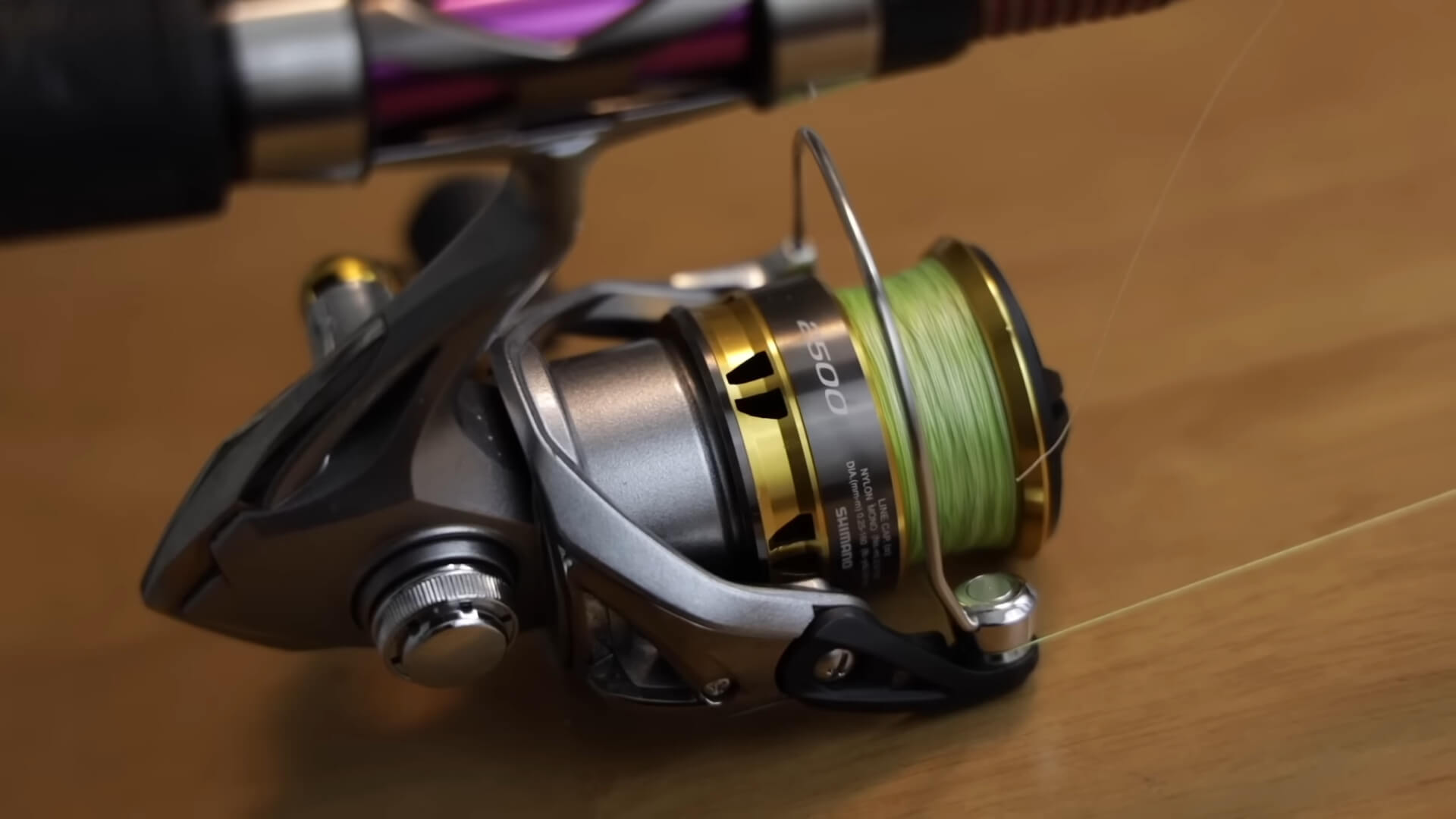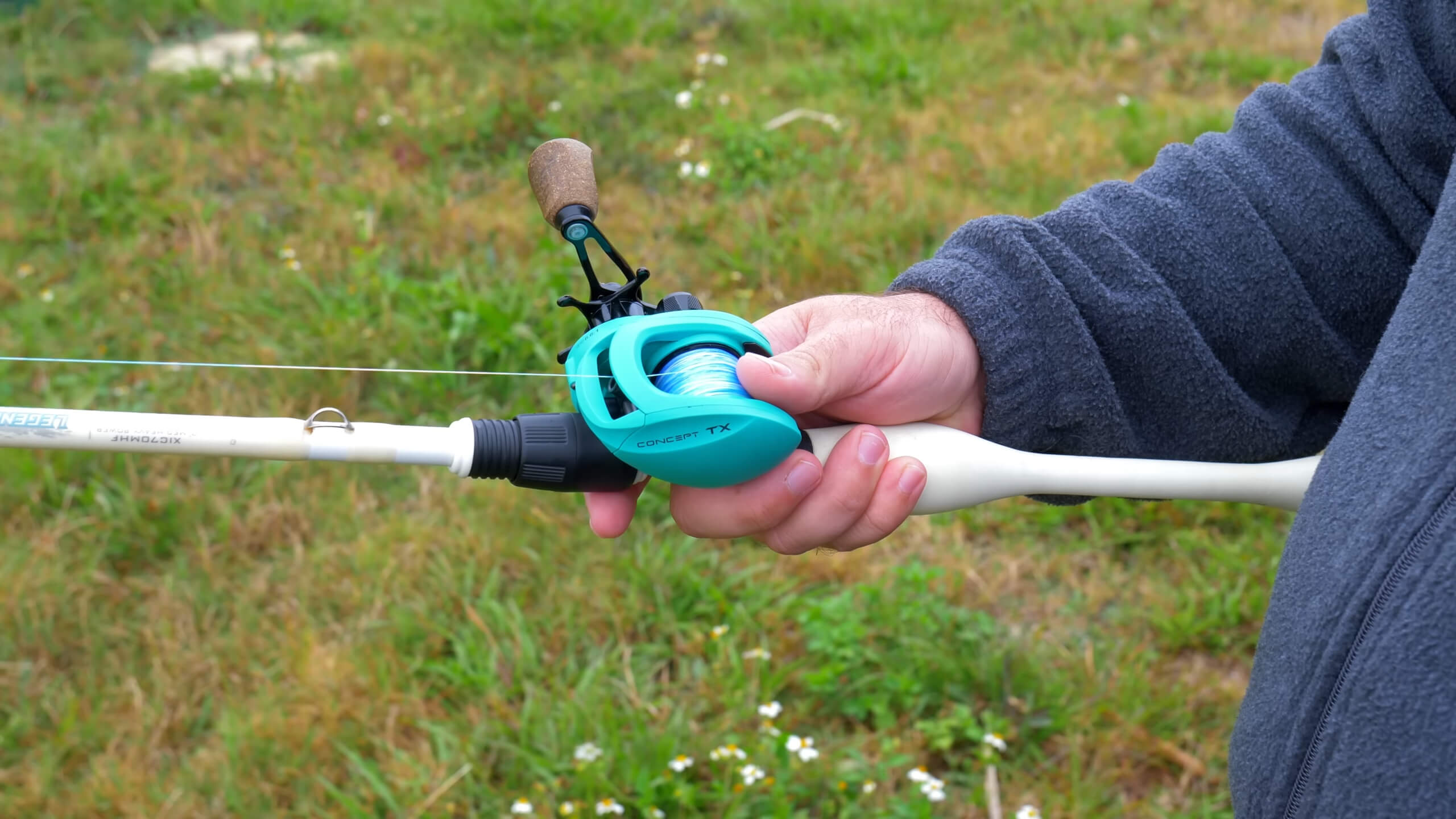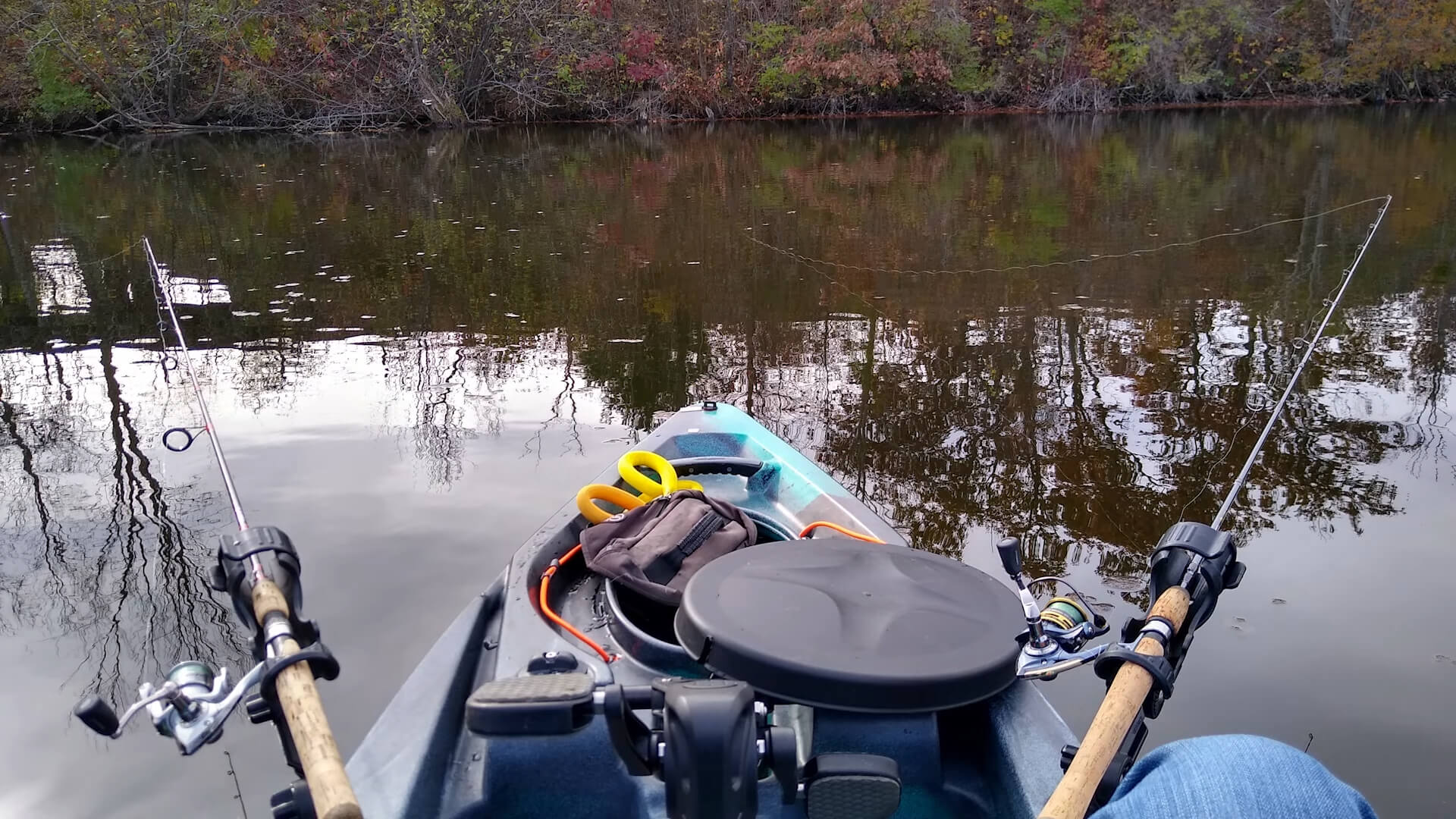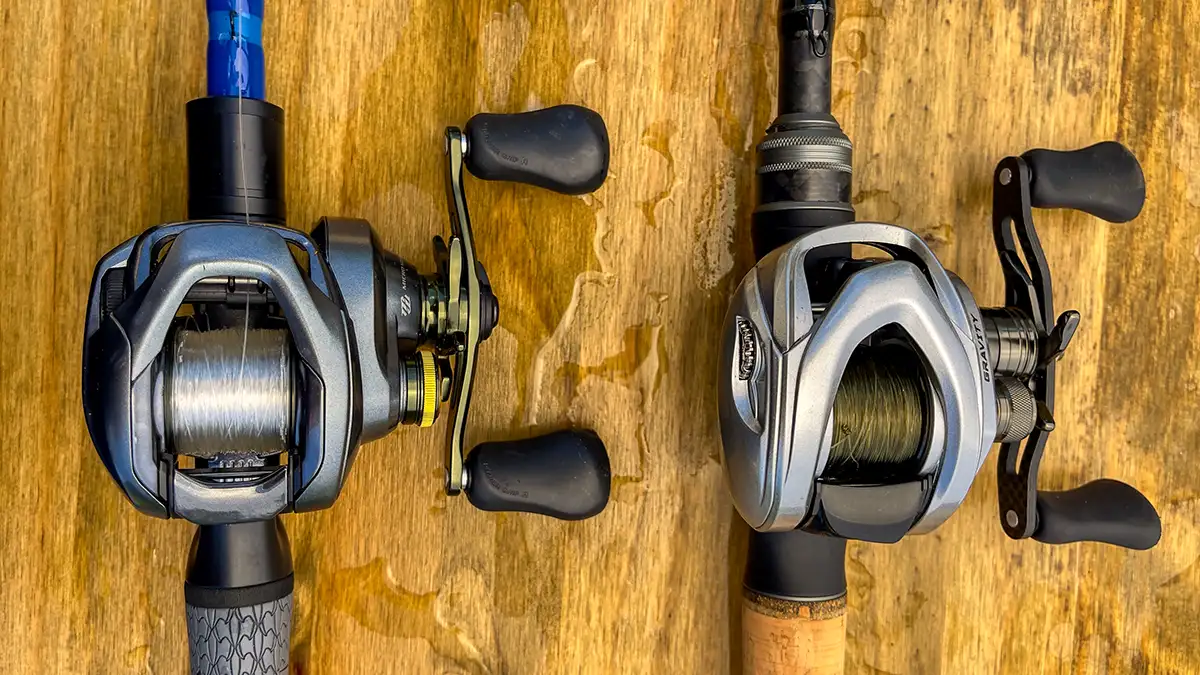When you’re looking at fishing rods, the spinning vs. casting debate is one of the first things that comes up. It’s easy to feel lost with all the options out there. But once you get a grasp on the basics, it all clicks into place.
This isn’t about getting caught up in fancy terms or features you’ll never use. It’s about understanding what you really need to have more fun and success while fishing. We’re keeping it simple, practical, and to the point so you can pick the right gear for what you’re aiming to do out there.
Let’s break it down in a straightforward way so you can make the best call.
Key Differences Between Spinning vs. Casting Rods
| Spinning Rods | Casting Rods | |
|---|---|---|
| Reel Position | Beneath the rod | On top of the rod |
| Line Guide Placement | Bottom of the rod, larger guides near the reel | Top of the rod, smaller and evenly spaced guides |
| Casting Accuracy | Easier for beginners, less accurate | Highly accurate, requires skill |
| Best For | Light lures, finesse techniques | Heavy lures, power fishing |
| Ease of Use | Beginner-friendly, minimal risk of backlash | Requires experience, prone to backlash |
What Are Spinning Rods?

| Feature | Details |
|---|---|
| Reel Position | Beneath the rod |
| Line Guide Placement | Along the bottom of the rod |
| Best For | Light lures, finesse techniques |
| Ease of Use | Beginner-friendly |
| Casting Distance | Good for longer casts, less accuracy needed |
| Target Species | Trout, crappie, bass, panfish |
Spinning rods are a go-to option for many anglers, especially those who are just starting out. These rods have the reel positioned underneath, and the guides (those little rings that help the line flow smoothly) are along the bottom. This setup is ideal for lightweight lines and smaller lures, making it easier to cast further with less effort. If you’re into techniques like drop-shotting, light jigging, or just throwing small lures, spinning rods are your best bet.
The main advantage is how user-friendly they are. You don’t have to worry much about line tangles or getting backlash, which makes spinning rods perfect for beginners. They’re versatile too, you can use them for almost any type of fishing, whether it’s casting from the shore, trolling from a boat, or even surf fishing.
When it comes to the “Spinning vs. Casting” debate, spinning rods excel in ease of use and versatility.
What Are Casting Rods?

| Feature | Details |
|---|---|
| Reel Position | On top of the rod |
| Line Guide Placement | Along the top of the rod |
| Best For | Heavy lures, accurate casting |
| Ease of Use | Requires experience |
| Casting Distance | Great for long casts with precision |
| Target Species | Bass, pike, muskie, large gamefish |
Casting rods are built for precision and power. Unlike spinning rods, the reel sits on top, and the guides run along the top of the rod. This design allows for better accuracy when casting, which is why casting rods are preferred when you need to place your lure right next to structures or in tight spots. Techniques like flipping, pitching, and working heavy cover are where casting rods shine.
However, casting rods aren’t the easiest to master. The reels (often baitcasting reels) require proper thumb control to avoid backlash, making them more suited for anglers who have already honed their skills. Once you get the hang of it, though, you’ll appreciate the control and precision they offer, especially when dealing with heavier lures or larger fish.
In the “Spinning vs. Casting” debate, casting rods come out on top for situations that demand power and accuracy.
Pros and Cons of Spinning Rods
| Pros | Cons |
|---|---|
| Beginner-friendly | Limited power for large fish |
| Versatile for different techniques | Not ideal for heavy lures |
| Great for lightweight lures and finesse | Lower accuracy in precise casting |
| Minimal risk of backlash | Shorter casting distance compared to casting rods |

Spinning rods have plenty of upsides, especially for beginners or those who value versatility. The most obvious advantage is how easy they are to use. You don’t have to worry much about line tangles or mastering complex casting techniques. Just flip the bail, cast, and you’re good to go. This simplicity makes spinning rods a solid choice for light lures and finesse techniques, such as drop-shotting or light jigging.
Another big plus is versatility. Whether you’re fishing in freshwater or saltwater, from the shore or a boat, spinning rods can handle a wide range of fishing scenarios. They’re also less likely to suffer from backlash, which is a common issue with casting setups.
However, spinning rods do have their downsides. They aren’t the best choice if you’re targeting larger fish or using heavy lures. The rod’s power and precision can be limited, making it difficult to handle big gamefish or navigate heavy cover. Additionally, while spinning rods offer decent casting distance, they usually fall short compared to casting rods when it comes to reaching far-off targets.
In the “Spinning vs. Casting” discussion, spinning rods stand out for their ease of use and versatility, making them perfect for casual anglers or those focusing on finesse. But if you need more power and precision, you might find their limitations holding you back.
Pros and Cons of Casting Rods
| Pros | Cons |
|---|---|
| High casting accuracy and control | Steeper learning curve |
| Great for heavy lures and big fish | Prone to backlash if not used correctly |
| Ideal for precise techniques like flipping | More expensive on average |
| Better suited for heavy cover and dense areas | Requires more skill to master |

Casting rods are the go-to choice when you need more power, accuracy, and control. Experienced anglers prefer them for techniques like flipping, pitching, and working heavy cover, where pinpoint placement of the lure is essential. The design of casting rods allows you to apply thumb pressure on the spool, giving you more control over where and how your lure lands. This precision is crucial when targeting specific structures or fishing in challenging environments.
Another big advantage is the ability to handle heavier lures and bigger fish. Casting rods offer more backbone, allowing you to apply more force when pulling fish out of thick vegetation or heavy cover. They also shine when you’re using techniques that involve heavier baits like crankbaits or large swimbaits.
However, casting rods aren’t without their challenges. The biggest drawback is the learning curve. Beginners often struggle with casting reels due to the risk of backlash—a tangled mess caused by the spool spinning faster than the line can be released. It takes time and practice to get the hang of using your thumb to control the line smoothly.
In the “Spinning vs. Casting” debate, casting rods clearly offer more power and accuracy, but they come at the cost of being more difficult to master. If you’re willing to put in the effort and want to target larger species in tough conditions, a casting rod is the way to go.
Which One Should You Choose?
| Criteria | Spinning Rods | Casting Rods |
|---|---|---|
| Skill Level | Best for beginners and casual anglers | Better for experienced anglers |
| Fishing Techniques | Finesse techniques, light lures, versatile applications | Power techniques, heavy lures, precise casting |
| Target Fish | Smaller species like trout, crappie, panfish | Larger species like bass, pike, muskie |
| Fishing Environment | Open water, finesse fishing, lighter cover | Heavy cover, structure fishing, dense vegetation |
| Casting Distance and Control | Easier casting, less accurate | Longer casts, higher accuracy with more control |
Choosing between spinning and casting rods depends largely on your experience, the techniques you prefer, and the types of fish you’re targeting. In the “Spinning vs. Casting” debate, here’s a simple way to decide:
- If You’re a Beginner: Go for a spinning rod. They’re easier to handle, forgiving when it comes to casting mistakes, and versatile enough to use in different settings. Whether you’re casting light lures or trying different fishing styles, a spinning rod offers a more accessible entry point without the frustration of constant tangles.
- If You Want More Precision and Power: A casting rod is your best bet. Once you’ve built some skills, the benefits of better accuracy, longer casts, and handling heavy lures become clear. They’re particularly valuable if you’re aiming to catch bigger fish in tough environments like heavy cover or near structures.
FAQs
What is the difference between spinning and casting reels?
The main difference between spinning and casting reels is their position and how they operate. Spinning reels hang underneath the rod, and the line is released by flipping the bail. Casting reels sit on top of the rod, and the line is controlled with a thumb brake, allowing for more precision but requiring more skill.
Are spinning rods good for bass fishing?
Yes, spinning rods are good for bass fishing, especially for finesse techniques like drop-shotting or using lightweight lures. However, for heavier lures and more power-focused techniques, many bass anglers prefer casting rods.
Can I use a casting reel on a spinning rod?
No, a casting reel is not designed to work with a spinning rod. The guides and reel seats are positioned differently, and using the wrong reel type on a rod will affect performance and can damage the gear.
What rod length is best for spinning rods?
The best rod length for spinning rods typically ranges from 6 to 7 feet for most applications. Shorter rods (around 6 feet) are good for close-quarters fishing, while longer rods (7 feet or more) provide better casting distance.
Why do casting rods have smaller guides?
Casting rods have smaller guides because they are designed to work with casting reels that spool the line more tightly. The smaller guides help maintain line control and accuracy, especially when casting heavier lures or targeting specific spots.
Last Words
Choosing between spinning and casting rods comes down to your skill level and fishing style. If you’re after versatility and ease of use, especially as a beginner, go with a spinning rod. If you’re more experienced and need precision, power, and control, a casting rod will be more suitable.
Both have their strengths, and understanding what each offers will help you make the right choice for your fishing adventures.

